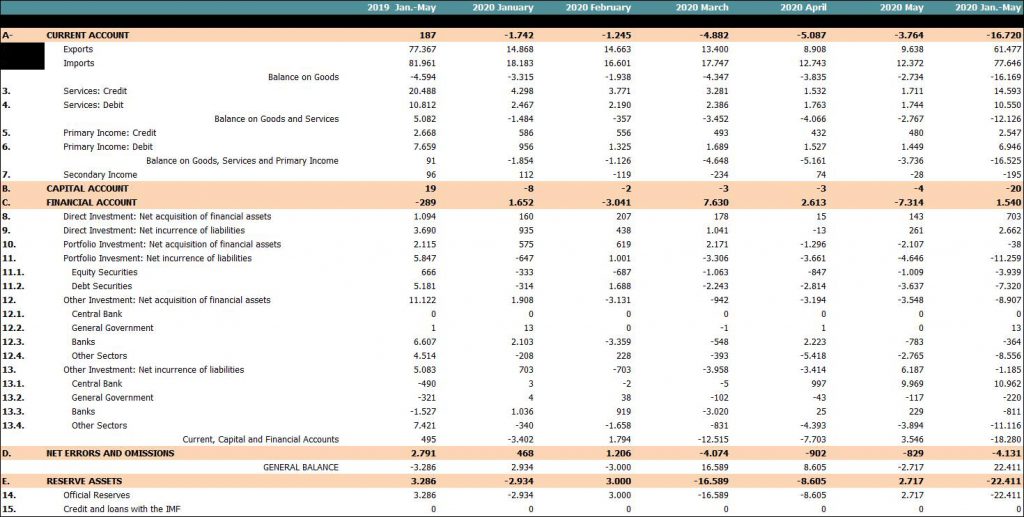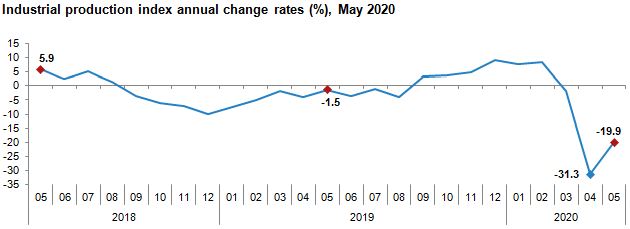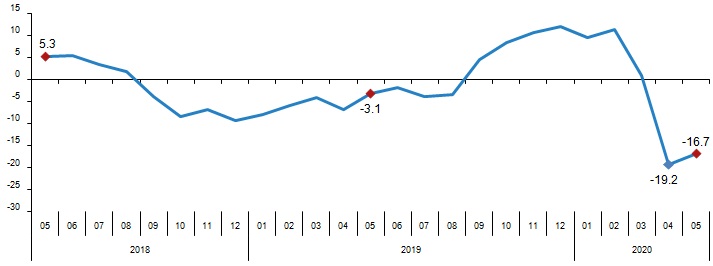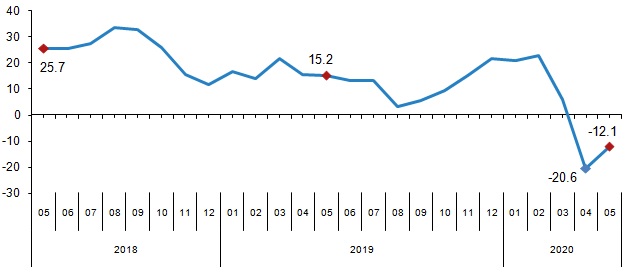As the calendars marked the anniversary of the second year of presidential system in Turkey the incoming macro data is far from pleasing President Erdogan who has the sole control over policy choices. While such a bad economic performance cannot be masked by revoking the Hagia Sophia’s status as a museum and opening it as a mosque again, the COVID-19 fallout is only making things worse for the President.
Last week’s drop in Turkey’s unemployment for the March-April-May period rate to 12.8% from 13.0% in the same period of the previous year was far from pleasing as the seasonally adjusted numbers suggested a pick up to 13.8% from 13.1% a month ago. Making the situation worse, the drop in unemployment rate compared to previous year during the outbreak mainly stemmed from the ones who are available for work but gave up seeking. While there are 4.08 million unemployed people in Turkey fort he mentioned period, the presence of an additional 4.5 million people who are not seeking job but available to start carry the real and broader unemployment rate up to 24.3% from 18.7% in the previous year with the biggest and harder to recover loss being in the service sector.
The 9.3% drop in the labor force combined with the 9.2% decrease in the employment would mean that Turkey’s unemployment rate will keep dropping in the coming months, yet that would be a misguiding Picture of the “real” situation in Turkey’s labor markets. Thus, while the COVID-19 related wounds on the economy remain and a meaningful recovery in growth and production are not in the horizon until, Turkey’s unemployment rate would soon rise in a permanent manner.

Investors keep shying away
The fresh May 2020 balance of payments data reflect Turkey’s stagnant economy and deteriorating relations with the main investors who happened to be mainly western countries.
During a contracting economic period, Turkey’s current account posted USD 3.8 bn deficit in May 2020 compared to USD 1.1 bn surplus back in May 2019, bringing the 12-month rolling deficit to USD 8.2 bn. The 20.5% drop in the exports that compares notably weaker than the 5% drop in imports; with the 57% drop in net tourism income keep fueling Turkey’s current account deficit.
The financing side is similarly problematic. With less than USD 1bn direct investments, no portfolio inflows and the private sector and banks engaged in external debt payments, Turkey’s central bank’s reserves were depleted by a mouthful USD22.4 bn so that the hit from no flows impacted the value of the Turkish lira in a limited manner.
The structural weaknesses related with the pandemic will keep hurting Turkey’s tourism revenues and suppress export performance. The USD 10 bn swap deal with Turkish central bank and the Qatari central bank back in May appear as a face lift that perhaps is hoped by the government ranks to mask the dire situation.

And yet another fresh macro data announced in the morning was the industrial production of May 2020 that showed another massive drop of 19.9% yoy compared to May 2019. The sizable drop follows the dramatic 31.3% contraction recorded in April at the peak of the COVID-19 related lock-downs. The monthly rise of only 17.4% from April by all means show how Turkey is not even close to a V shaped recovery down in its industrial sectors.

Consumers in no hurry
The turnover and retail indices reflect a similar picture. Retail sales volume decreased by 16.7% yoy in May 2020 as the non-food (except automotive fuel) sales dropped by 25.5% yoy, automotive fuel sales slid by 22.6% and as could be expected food, drinks and tobacco sales increased by 3.0%. In fact, retail sales volume with constant prices increased by a very very muted 3.8% in May 2020 compared with April.
Retail sales volume annual rate of change (%), May 2020

Total turnover index including industry, construction, trade, and services sectors dropped by 12.1% on annual basis in May 2020. The details show industry decreased by 14.8%, construction contracted by 11.0%, trade slid by 6.2% and services crashed by 24.8% on annual basis in May 2020.
Total turnover annual rate of change (%), May 2020

Total turnover index including industry, construction, trade, and services sectors dropped by 12.1% on annual basis in May 2020. The details show industry decreased by 14.8%, construction contracted by 11.0%, trade slid by 6.2% and services crashed by 24.8% on annual basis in May 2020.
The fortunes will hardy return
The world economy no doubt has spun with the coronavirus pandemic and is still trying to find a way out from the long-term economic effects of the disease. In that sense Turkey is no different as the country faced a rough and unexpected period of economic shock with its lasting impact.
Yet, the pandemic cannot hide that fact that the Turkish economy was already in troubled waters given the one-man management style as the by-product of the presidential system. The August 2018 currency shock, the monetary policy mistakes intensified since mid-2019, the fiscal policy mistakes that depleted Turkey’s central bank fx reserves along with skyrocketing “on and off balance sheet” fiscal expenditures have not begun with the COVID-19 shock.
All combined, Turkey seems stuck in a contracting GDP this year to a tune of 4-5% along with a rising current account deficit towards 5-6% of its GDP, double-digit inflation stuck at best around 12-13%, broadly calculated unemployment rate soaring towards 30% and worst of all stuck with piling doubts on official data fraud.
In truth, the economic mishap is based on a broad collapse of institutions in the government sector. Such a sad combination is also being accompanied by Turkey’s unraveling relationship with the Western world. Thus, sustainable economic fortunes appear a distant possibility and the current downturn will apparently be the most painful of those faced in the past couple of decades.
GA.
